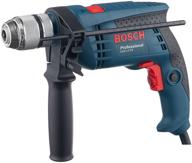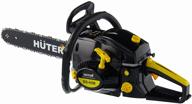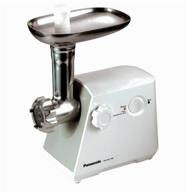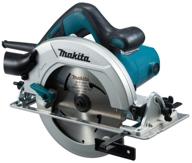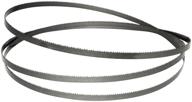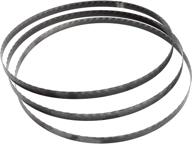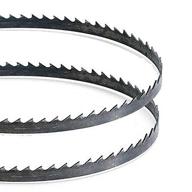
Review on 🤖 56 015 DBHC 10" Labor-Saving Device by Cesar Carter

Works great on drywall and wood
Failed to load media. As the name suggests, this tool saves work. I bought it specifically to cut 20 holes in the ceiling for speakers. I needed two different sizes, the largest was just over 9-3/4", so this was one of the few punches that fit my needs. I have included many photos of both the tool and the hole it can cut .There is also a video of it in action.It claims to be able to go through wood and I plan to try it at some point but so far I've only done interior drywall with it.***UPDATE: I've used it, to make 4 holes in wood, the outer jamb is about 3/8" thick. It worked very well. Sure it took a lot more time and effort than drywall, but it was a very nice clean cut. Photos are attached. 2. UPDATE: About a year later I need to make 2 more holes in 1/4 plywood. Not very well this time. On the second hole, the center drill broke into several pieces. I always expected the failure point to be cutting blades or mounting screws. See attached photos. I still recommend this item, but take your time making wood instead of drywall. *** It definitely worked as intended and the actual cutting of the holes was quick and fairly easy, but you have to be very meticulous with the setup. Contrary to some previously reported, the shoulder length guides work accurately but are difficult to use unless you have a good roundness measurement. I'll cover this in more detail in the Cons section below. For the short review version, it was definitely worth it for many holes. See below for more details. Pros: The holes come out very clean on the side you drill into. By clean I mean a good edge to corner with no hanging parts or trailing parts. You'll have something on the paper side of the drywall, but who cares? - The shield picks up all the debris and most of the dust, making things a lot cleaner than having a saw and an assistant keeping a vacuum nearby. cut. You just wait about 5-10 seconds to stop the drill to allow the dust to settle inside, then throw it in the bin and you're done. -- It's fast, it takes about 15 seconds to actually drill the hole. --- It is adjustable. I'll post more on how to adjust it in the "Issues" section, but it's nice to have a tool that can cut such a wide range of sizes. -- Comes with two sets of blades, one is already installed and the other is optional. They are labeled L and R for the two sides of the instrument. I see no reason why you couldn't sharpen them yourself if they need to. You can adjust the depth of cut by turning the large nut between the drill bit and the blade. Between this nut and the screen is a spring that maintains pressure on the screen at the surface while allowing the drill to move up and down to the depth you set. There is no need to draw a hole. You just need to know the center point and make sure you have space around it. I used a Z-shaped wire hangar with one end slightly larger than the radius of my hole. I slipped it through the small pilot hole in the center and rotated it 360 degrees to make sure I didn't hit anything. You'll notice below that I'm talking about making sure the center pilot drill has something to drill, meaning no proper pilot holes. In my case, a small hole about ½ inch near my intended center point was enough to still give my guide tip something to poke at. I compensated by making my wire a little longer than necessary to make sure I didn't hit anything when moving that ½ inch. Cons: You have to have something for the guide in the middle. You will notice in my video that there is already a small hole where I wanted my hole to be. I had to drill right next to it to get the tool to work. I once tried to make a cut so the drill bit "floats" in a pre-existing hole, thinking I could hold it all in place, when the blades started to bite. It was a mistake... one side was starting to move and the other hadn't touched yet and the whole thing was pulling me to the side. A screen pressed against a surface just doesn't have enough grip to keep everything steady. To adjust the hole size, you need to disassemble the tool. The screws to adjust the blades along the arms are under the blades. This faces the shield when assembled. To resize you must remove it from the tool, remove the guard, which requires removing a large nut (hand tight only) and the spring, then loosen the screw under each blade, resize, tighten and reassemble . . I think the only way to fix this is to put the screw on the side of the blade post instead of under it, but they may have already tried that and it might be the best way to keep the blades from moving . The last thing you want is for one of them to move even a little while drilling. The markings on the handle are only suitable for good round measurements. They are marked to the nearest ¼ inch. It doesn't seem too bad, except that the only way to measure works is by aligning each blade so that the inside edge of the post lines up with the numbers. This is a rounded post aligned in a straight line and you should use the edge closest to the center guide cap and opposite the cutting blade. Since both blades have to be adjusted independently and two different distances can spoil your nice hole, it is very important that they are exactly level. You have to be very careful with anything between the ¼ inch measurements. I checked everything with a ruler and tape just to be sure. About halfway through my 20 cuts, I noticed an increase in the amount of dust seeping between the screen and the surface. There is a thin piece of plastic around the edge of the shield and I think if they enlarged it and made it more like a foam protector that allows for more compression when you press it against a surface that would help, especially with textured ceilings. It should be noted that towards the end I made large holes, almost a full 10 inches, which may have played a role as well. Application Tips: - Don't do it too fast. Insert the pilot bit into the surface, press the shield firmly against the surface, rotate the bit until the blades touch, and push evenly and slowly. Trying to move too fast will cause him to bite hard and get stuck instead of slicing, making him want to jump out of your hand. "Speaking of which, even with a gentle and slow thrust, it took a lot of arm and forearm strength to hold it. it's stable (especially towards the end of the 20th hole). The bigger the hole, the harder it is to control. I have great respect for my wife's physical form, but she had no way of controlling and holding it while she was kicking and jumping in the big boxes. One way around this would be to use a second set of hands. Once you start the pilot drill, you can have a second person hold the shield while the drill secures the drill with both hands. The blades are thick, so keep in mind that the actual cutting edge is on the outside of the blade, although it's marked for use with the inside of the blade stand. When taking a fuse measurement with a tape measure, measure from the outside of one blade to the outside of the other. Then make sure that the center of the guide nozzle is exactly halfway between them. In general I am satisfied. If I only had to put a couple of holes it wouldn't be worth the $100 I paid. I have 20 and I'm glad I had it. I can't imagine how long it would take, how messy it would be, and how much uglier my holes would be if I used a drywall handsaw or any other power tool like a jigsaw.
- Satisfied so far
- Will write later


